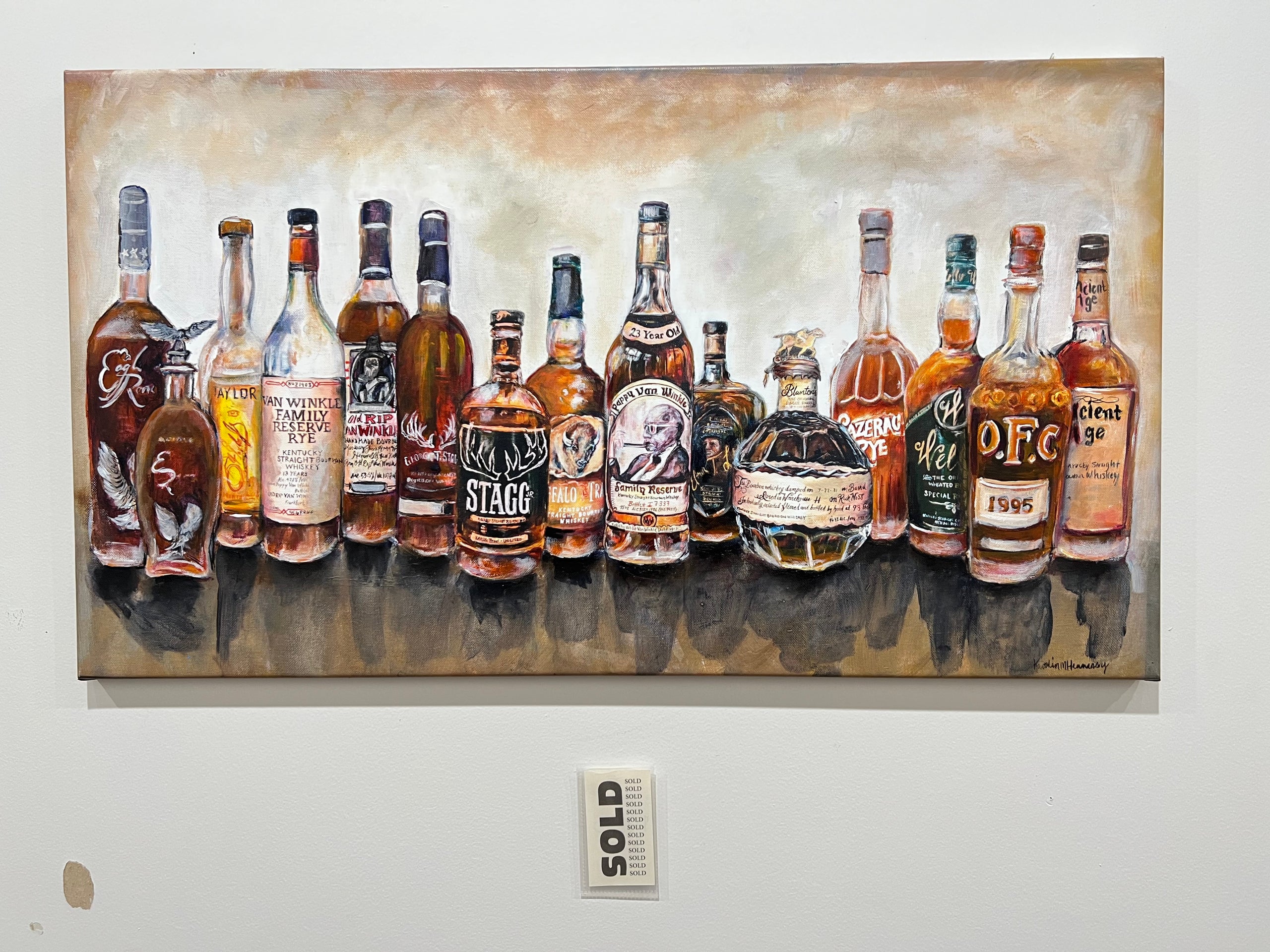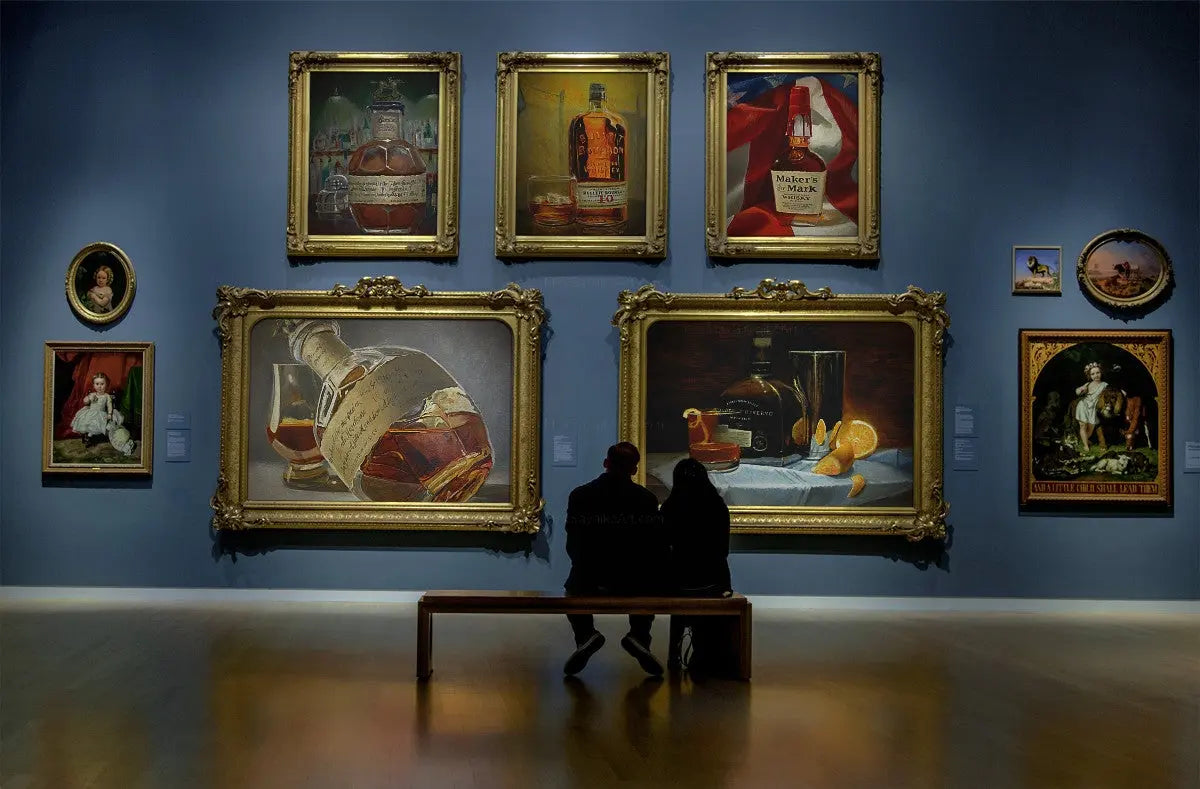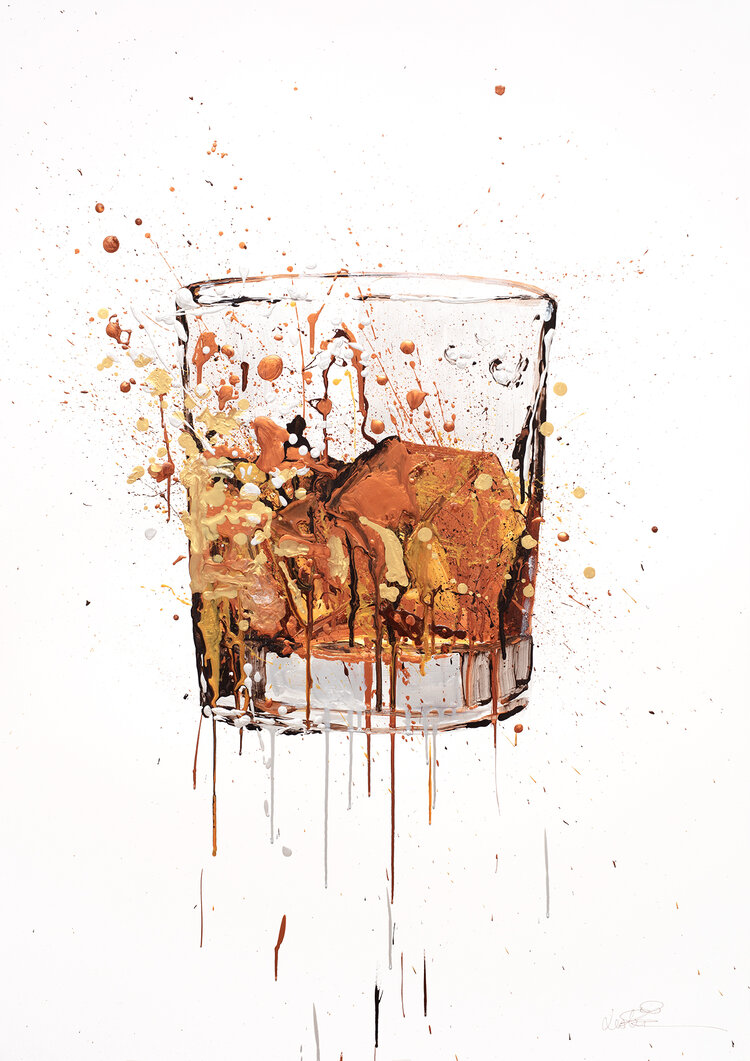Catching the Essence of Bourbon Art With Unique Aesthetic Depictions and Designs
The art of scotch extends beyond the fluid itself, materializing via a variety of aesthetic depictions that envelop its fabled heritage and workmanship. From the careful style of labels that share brand name narratives to expressive digital photography that records the spirit's allure, each artistic expression serves to enhance the consumer's journey. As the industry embraces contemporary fads, the dialogue surrounding these representations becomes significantly abundant and intricate, meaning much deeper connections between culture and creativity. What continues to be to be discovered is just how these developing designs mirror not only the bourbon itself yet likewise the changing landscape of creative analysis.
The History of Bourbon Art

As scotch production spread, so too did the need to boost its experience with art. From the complex inscriptions on very early casks to the intricate labels of modern-day containers, each aspect mirrors an one-of-a-kind artistic vision, working as a visual story of the bourbon's heritage.
In the 18th and 19th centuries, the surge of the commercial transformation better enhanced bourbon art, causing ingenious packaging and advertising that captured customer focus. Musicians and developers began try out looks, imbuing whiskey-related images with symbolic meanings that shared notions of workmanship, custom, and community.
Today, scotch art continues to develop, mixing standard methods with modern art forms. Bourbon Art. This recurring discussion between the spirit and its graph underscores the long-lasting bond between whiskey and society, enhancing the general experience for fanatics worldwide
Iconic Container Designs
While lots of variables add to the allure of whiskey, famous container designs play an essential function in shaping consumer assumption and enhancing the overall experience. The aesthetic discussion of scotch containers is not merely an aesthetic consideration; it functions as a bridge between the item and the consumer, evoking emotions and establishing expectations.
Distinctive forms, products, and closures can boost a bourbon brand's identification, making it quickly well-known on crowded racks. As an example, the classic Glenfiddich container, with its stylish tapered silhouette, conveys a sense of practice and workmanship, while the strong, contemporary design of the Balvenie container shows technology and sophistication. The use of tinted glass or one-of-a-kind appearances can suggest the high quality and personality of the whiskey within.
Renowned designs commonly integrate components of social heritage, symbolizing the brand's background and link to its roots. Brands like Jack Daniel's use an uncomplicated, durable style that reverberates with its American whiskey heritage. Inevitably, the effect of container layout prolongs beyond plain capability; it encapsulates the essence of the brand name, welcoming consumers to delight and explore in the rich tapestry of scotch culture.
Tag Artwork and Branding
Container layouts commonly set the phase for what consumers can expect, but label artwork and branding play an equally substantial role in communicating a bourbon's identity. The label works as the initial factor of get in touch with in between the item and the consumer, enveloping the essence of the bourbon within its visual elements.
Reliable tag artwork combines imagery, typography, and color to produce a narrative that resonates with the brand name's heritage and target audience. A tag featuring intricate pictures and vintage fonts may stimulate a feeling of tradition and craftsmanship, appealing to connoisseurs. In contrast, vibrant shades and contemporary design aspects may draw in a younger demographic seeking advancement and enjoyment.


Photography and Visual Storytelling
Recording the significance of bourbon with digital photography and visual storytelling is check here an art type that raises the brand experience. This tool goes beyond plain product representation, delving right into the intricate stories that border each bottle. By employing engaging imagery, photographers can evoke emotions that resonate with customers, inevitably forging a deeper connection to the scotch brand.
Aesthetic narration in whiskey photography typically uses rich structures, illumination, and make-up to highlight the unique attributes of the spirit. The interaction of light and shadow can accentuate the brownish-yellow tones of scotch, while the selection of background elements-- such as rustic barrels or stylish glassware-- can reinforce the brand's heritage or way of living associations.
In addition, catching the ritualistic aspects of bourbon intake, from the pouring to the sampling, welcomes viewers right into a sensory experience, permitting them to imagine the flavors and aromas that wait for. Each photo not only showcases the product but also narrates of craftsmanship, tradition, and the moments that scotch can improve - Whiskey Art. Thus, digital photography becomes an effective tool in articulating the identity of scotch brand names, placing them within the wider cultural landscape
Arising Trends in Bourbon Art
The evolution of whiskey art is significantly formed by modern fads that mirror broader societal shifts and customer choices. One noticeable trend is the combination of sustainability into art practices. Artists are now using recycled materials and environmentally friendly processes to develop whiskey-themed pieces, reverberating with environmentally conscious consumers. This shift not just highlights the value of sustainability however also improves the narrative surrounding scotch manufacturing.
In addition, digital art has surged in appeal, enabling innovative depictions of whiskey. Artists are leveraging technology to craft immersive experiences, such as increased fact installments that involve viewers and supply a much deeper understanding of scotch's social importance. This fad also reaches social media platforms, where visually striking web content garners interest and fosters community amongst fanatics.
Additionally, partnerships in between scotch brand names and artists are becoming a lot more widespread. These collaborations produce limited-edition packaging layouts and exclusive artworks that celebrate both the workmanship of bourbon and the imagination of artists. As scotch art remains to develop, these arising trends will undoubtedly form its future, cultivating a dynamic junction of culture, sustainability, and technology within the scotch community.
Verdict
To conclude, the art of scotch includes a varied variety of visual depictions that mirror its rich heritage and workmanship. From legendary bottle styles and intricate tag artwork to compelling digital photography, each component contributes to a broader narrative that enhances the consumer's experience. As arising trends, such as digital art and sustainability, remain to form this artistic landscape, the complex identification of whiskey remains a sustaining source of cultural link and exploration.

In final thought, the art of bourbon look what i found encompasses a varied array of visual representations that show its abundant heritage and craftsmanship.